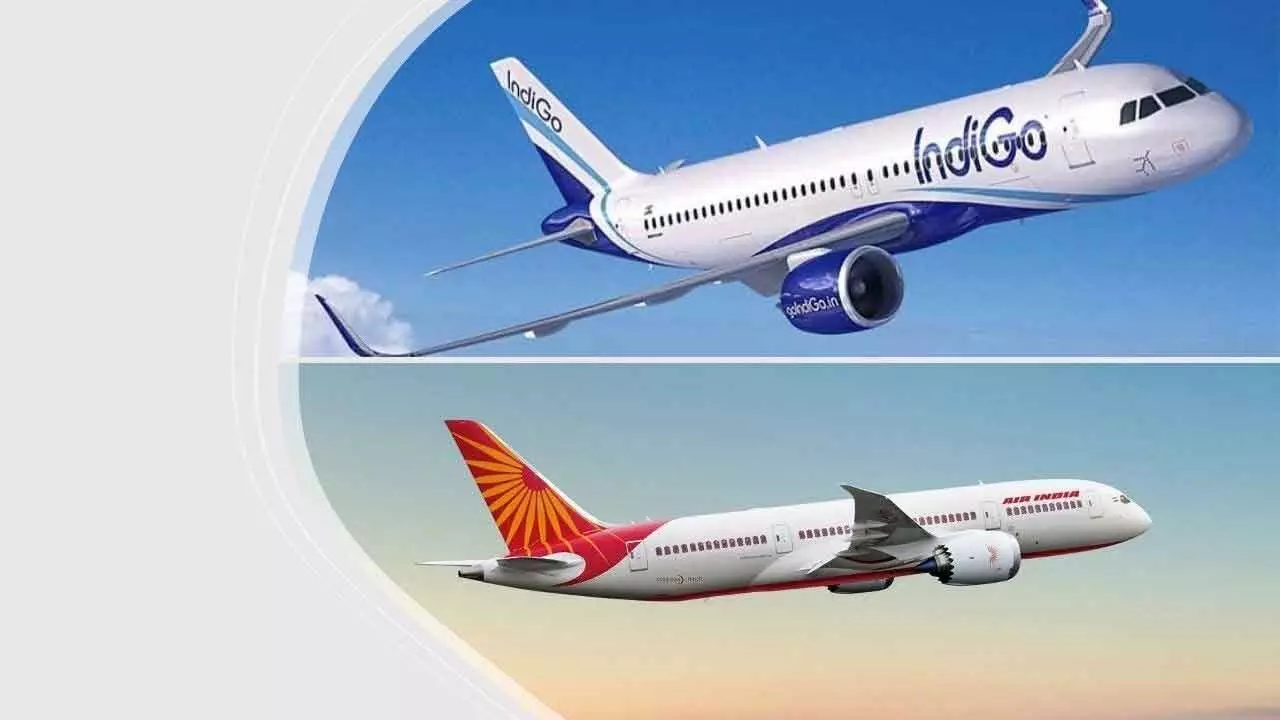Indian Aviation Industry’s Steady Growth Boosts Consolidation
It is a welcome development that the Centre is placing strong emphasis on sustainability
Indian Aviation Industry’s Steady Growth Boosts Consolidation

Industry revenues are expected to reach an historic high of $996 billion in 2024. Passenger revenues are expected to reach $744 billion in 2024, up 15.2 per cent from $646 billion in 2023
India's aviation industry has experienced significant growth in the past 10 years. The number of operational airports in the country has more than doubled from 74 in 2014 to 157 in 2024 and the aim is to increase this number to 350-400 by 2047.
Even the domestic air passengers have more than doubled in the past decade, with the country’s airlines significantly expanding their fleets to cater to the rising demand.
It is a good measure that the Union Government is placing strong emphasis on sustainability. This is evident in the achievements of Delhi and Mumbai airports, both of which have been awarded the prestigious Level 4+ Carbon Accreditation. This recognition highlights their commitment to reducing their carbon footprint and promoting responsible aviation practices.
The airport operators, including Airports Authority of India (AAI), have installed solar power plants at various locations and airports for generation and self-consumption of green and renewable energy to encourage green energy usage at the airports. Additionally, some of them are procuring green energy through open access. Since 2014, around 73 airports have switched over to 100 per cent green energy usage.
India’s aviation sector is on a transformative path, with significant strides in infrastructure development, regional connectivity, and sustainability efforts. The success of initiatives like RCS-UDAN has enhanced access to air travel, promoting economic growth and connectivity in underserved regions. With an impressive rise in both domestic and international passenger numbers, India is poised to further strengthen its position as a global aviation hub.
As the sector embraces greener practices, such as carbon-neutral airports and solar energy adoption, the future of the country’s aviation sector promises not only continued growth but also a commitment to sustainability, ensuring long-term benefits for the nation and the environment.
In a world of many and growing uncertainties, airlines continue to shore-up their profitability. The expected aggregate net profit of $30.5 billion in 2024 is a great achievement considering the recent deep pandemic losses. With a record five billion air travelers expected this year, the human need to fly has never been stronger. Moreover, the global economy counts on air cargo to deliver the $8.3 trillion of trade that get to customers by air. Without a doubt, aviation is vital to the ambitions and prosperity of individuals and economies. By all accounts, strengthening airline profitability and growing financial resilience is important.
“The airline industry is on the path to sustainable profits, but there is a big gap still to cover. A 5.7 per cent return on invested capital is way below the cost of capital, which is over nine per cent. And earning just $6.14 per passenger is an indication of just how thin our profits are—barely enough for a coffee in many parts of the world. To improve profitability, resolving supply chain issues is of critical importance so we can deploy fleets efficiently to meet demand. And relief from the parade of onerous regulation and ever-increasing tax proposals would also help. An emphasis on public policy measures that drive business competitiveness would be a win for the economy, for jobs, and for connectivity. It would also place us in a strong position to accelerate investments in sustainability,” said an industry expert.
Profitability is expected to strengthen in 2024 as revenues grow slightly faster than expenses (+9.7 per cent vs. +9.4 per cent respectively). Operating profits are expected to reach $59.9 billion (+14.7 per cent from $52.2 billion estimated for 2023). Net profits, however, are expected to grow slightly slower at +11.3%, from $27.4 billion estimated for 2023 to $30.5 billion estimated for 2024.
Industry revenues are expected to reach an historic high of $996 billion in 2024. Passenger revenues are expected to reach $744 billion in 2024, up 15.2 per cent from $646 billion in 2023. Revenue passenger kilometers (RPKs) growth is expected to be 11.6 per cent year on year. The long-term 20-year growth trend is expected to see passenger demand grow 3.8 per cent annually for the 2023-2043 period.
Passenger yields are expected to strengthen 3.2 per cent over 2023. When measured in constant 2018 dollars, the real average return airfare in 2024 is expected to be $252, significantly less than the $306 of 2019. This continues the trend of ever-increasing affordability for air travel, even if the figures are somewhat skewed by shorter journey distances in 2024 due to the slower pace of recovery in some long-haul markets..
The average passenger load factor is expected to be 82.5 per cent in 2024. This is largely in line with pre-pandemic levels (82.6 per cent in 2019) and reflects tight supply and demand conditions from ongoing supply chain issues for aircraft and engines.
Cargo revenues are expected to fall to $120 billion in 2024 (from $138 billion in 2023). Both are down sharply from the extraordinary peak of $210 billion in 2021, but it is above 2019 revenues, which were $101 billion and an improvement on the previous forecast of $111 billion, which was announced last December.

